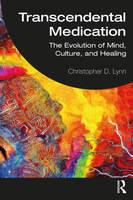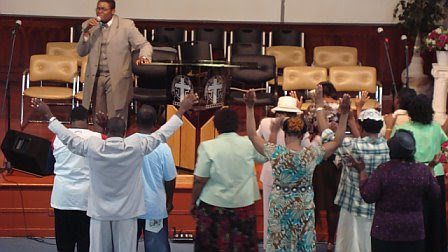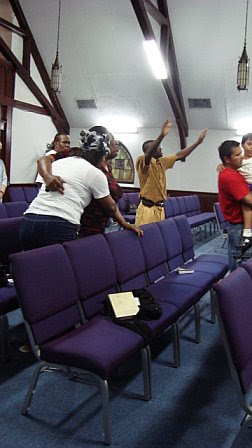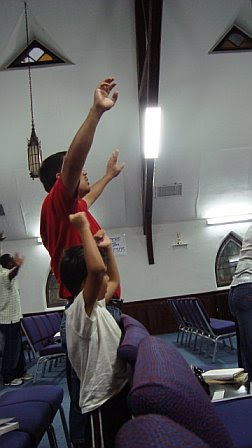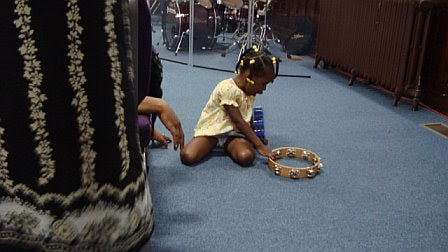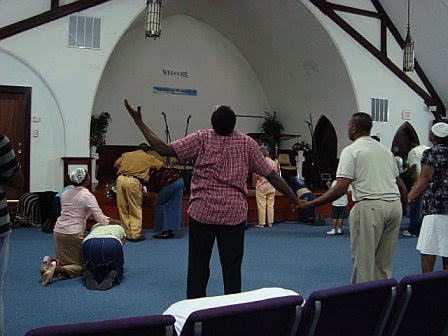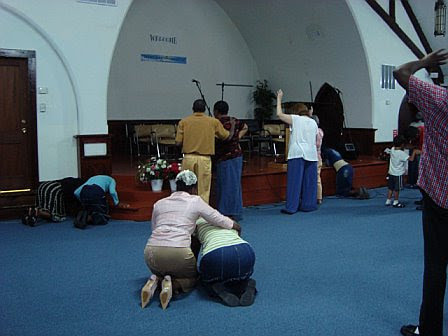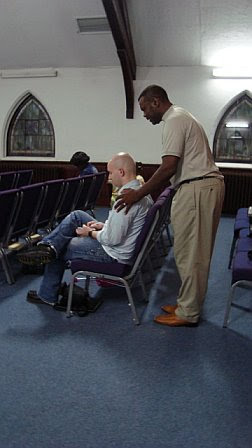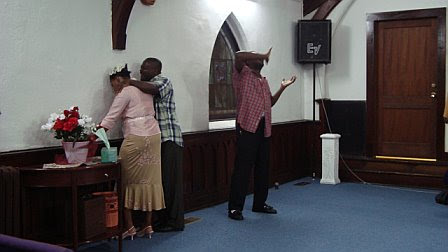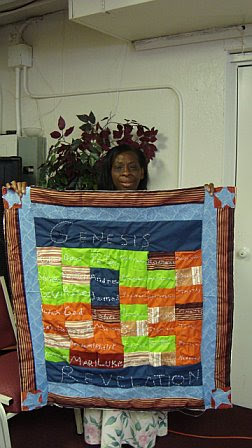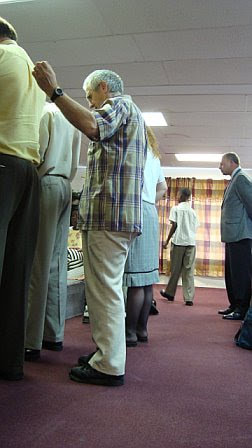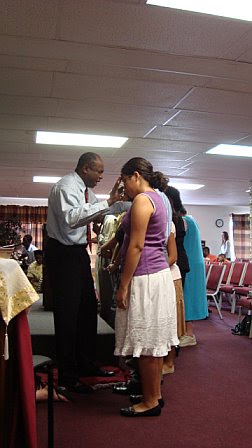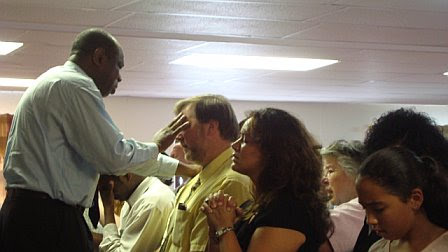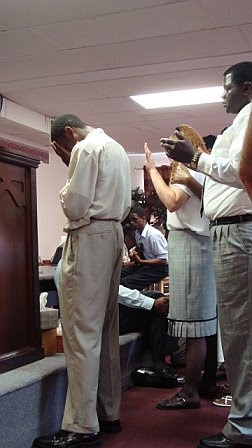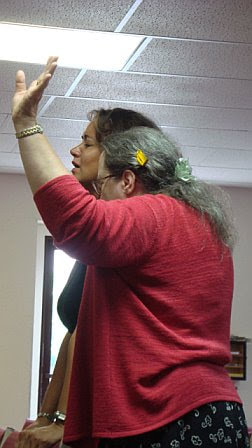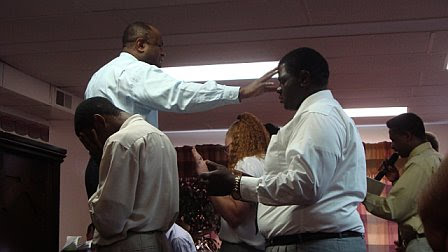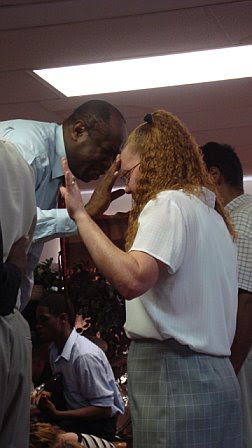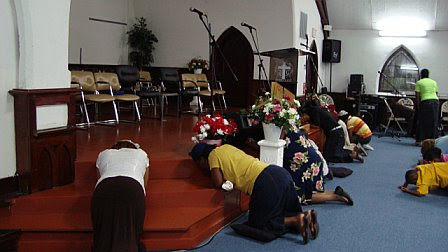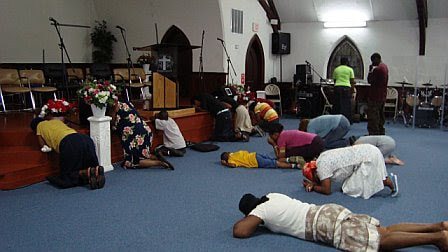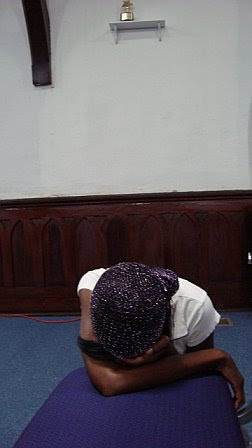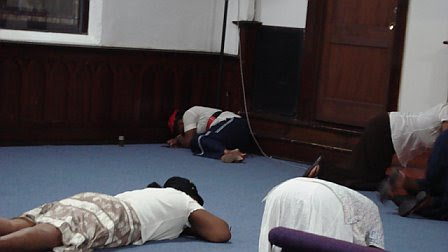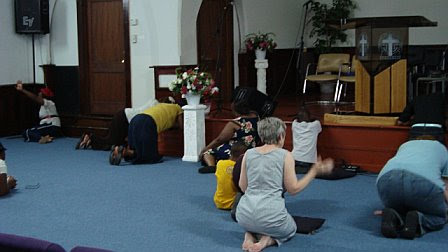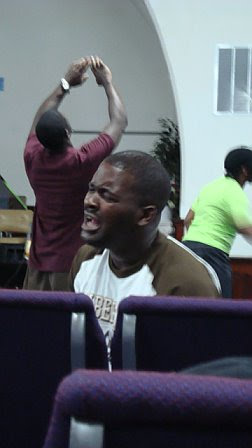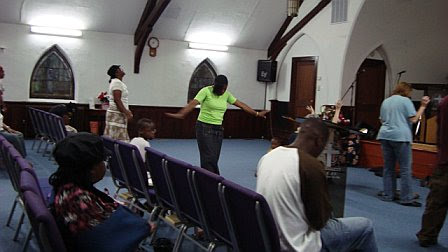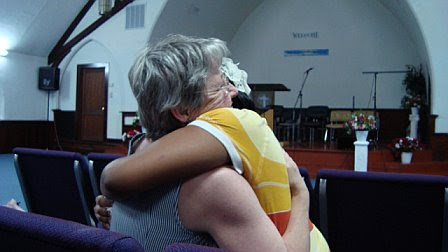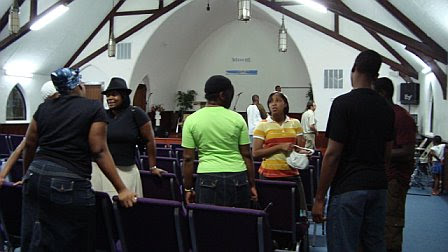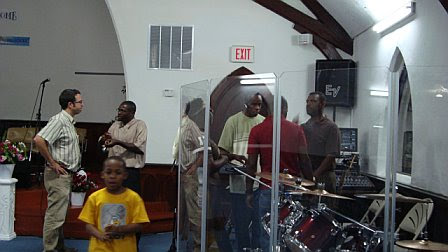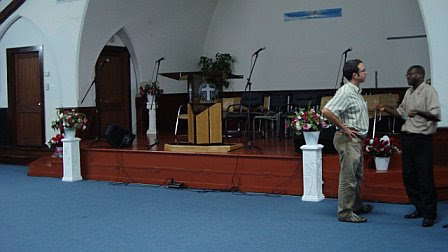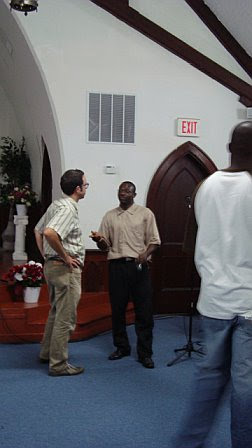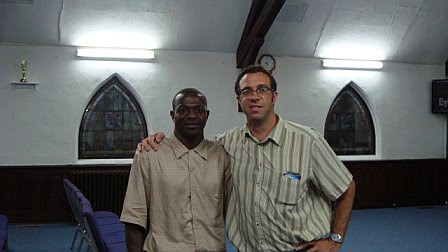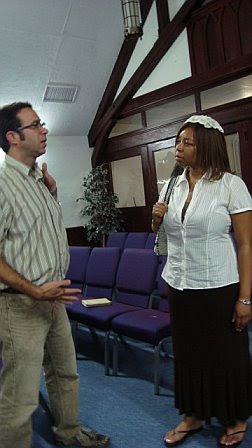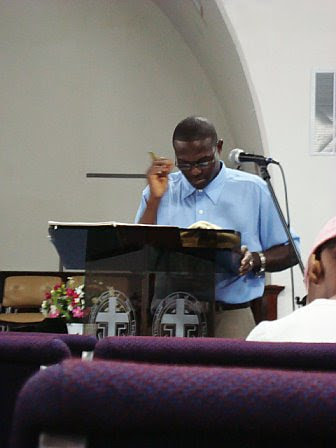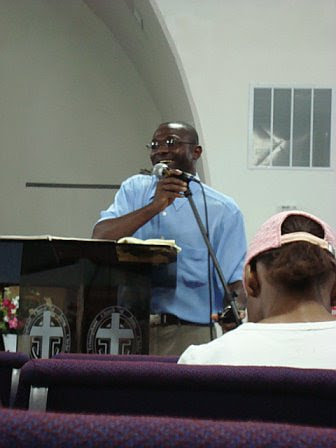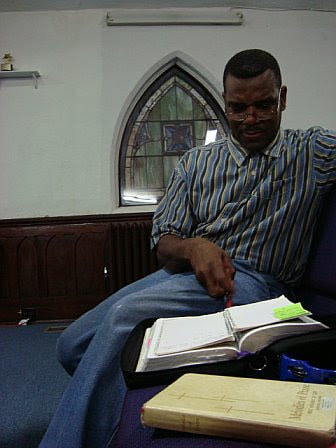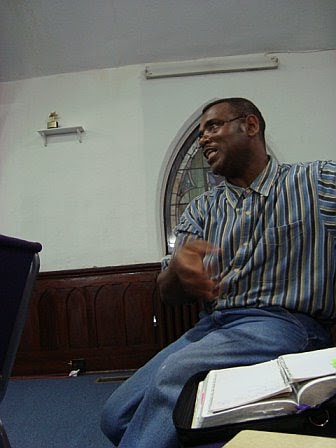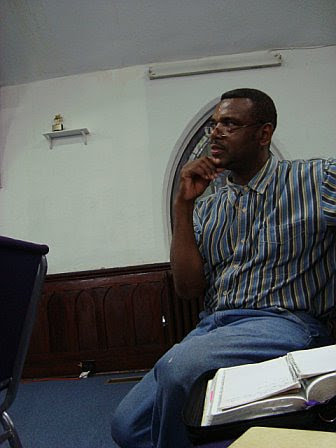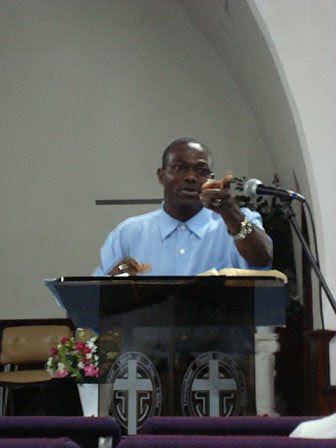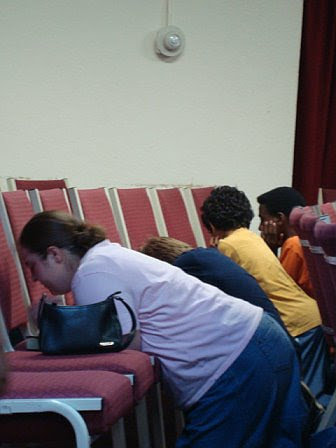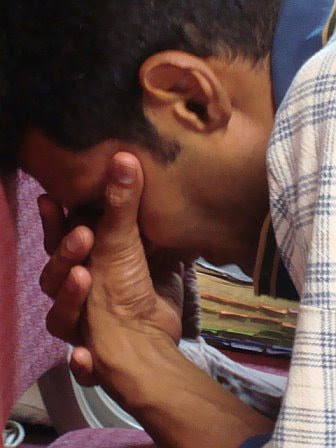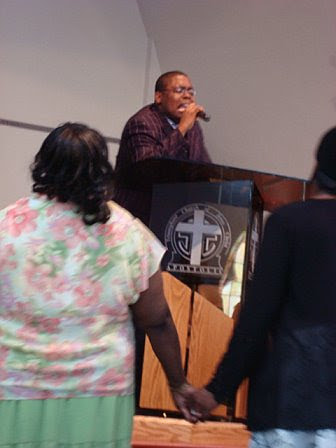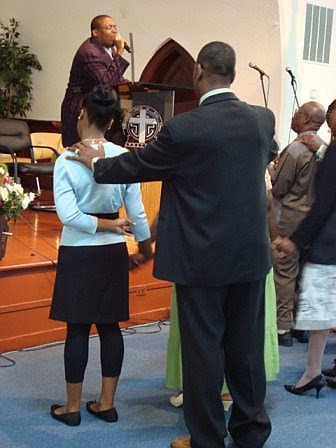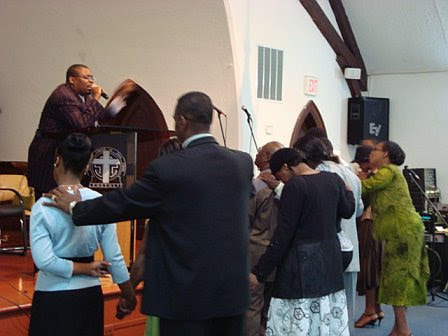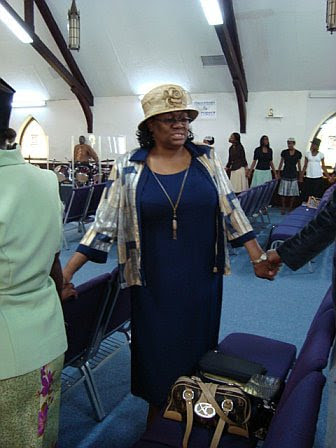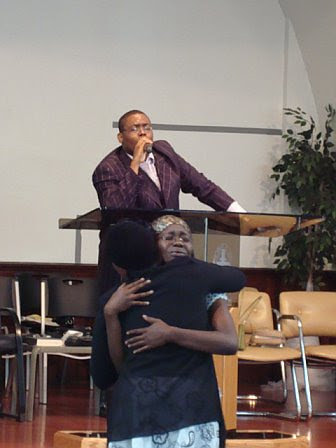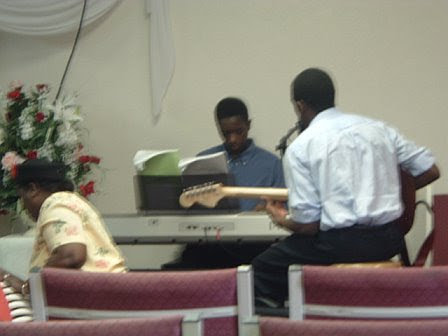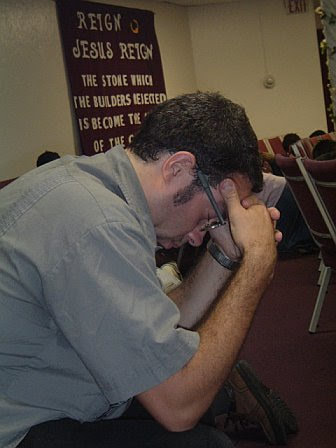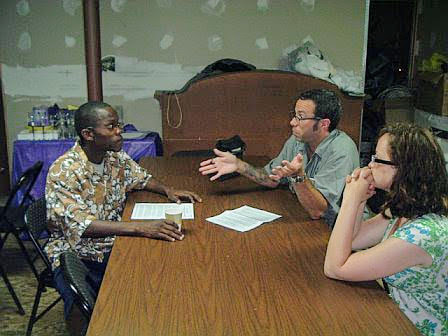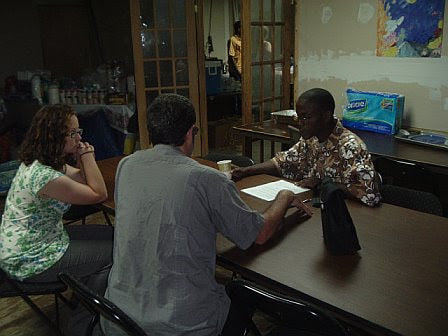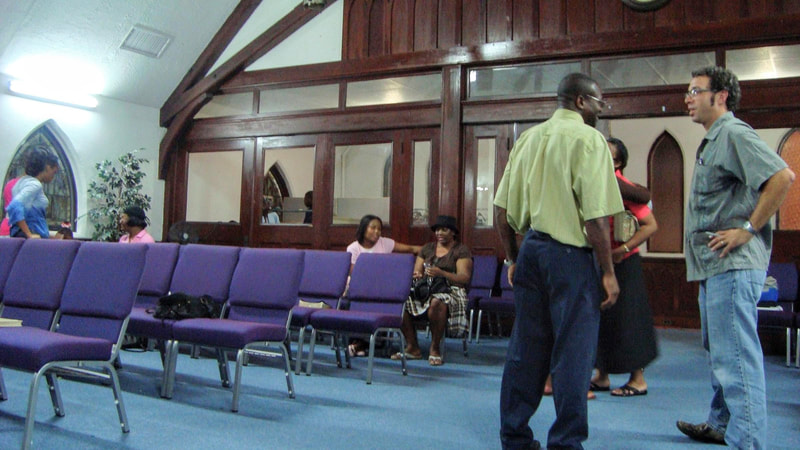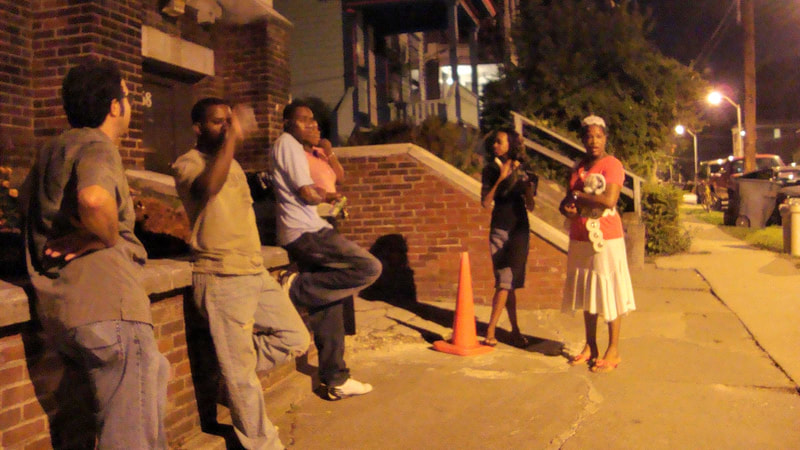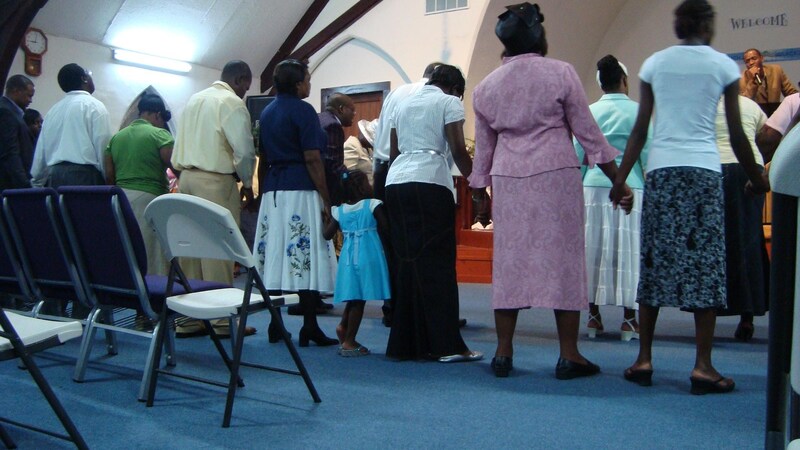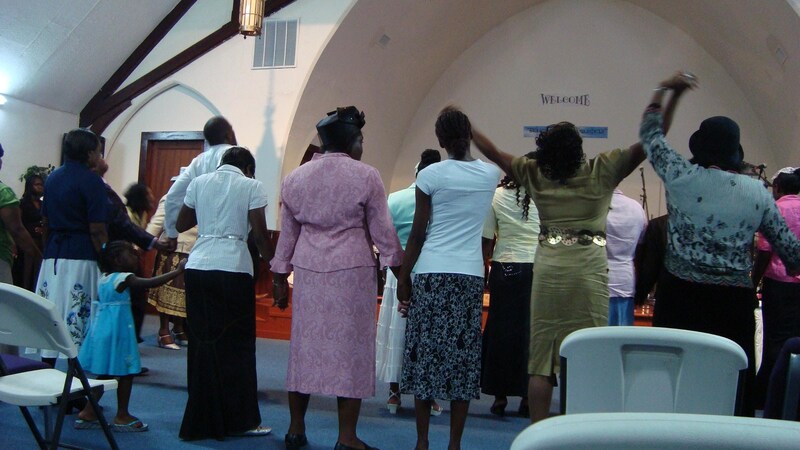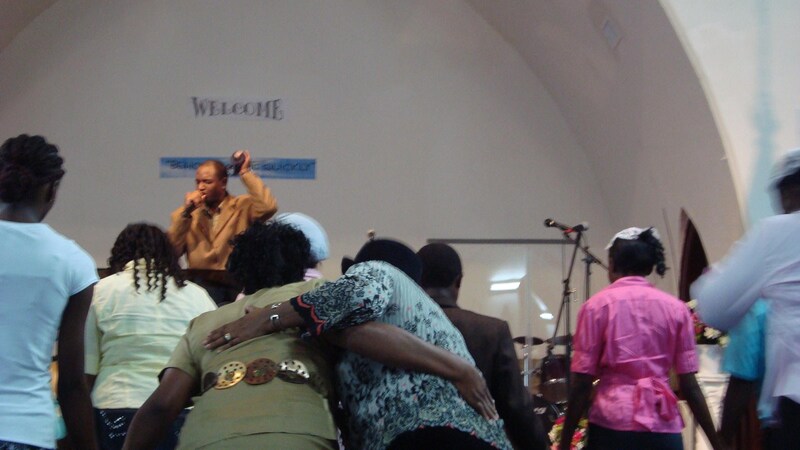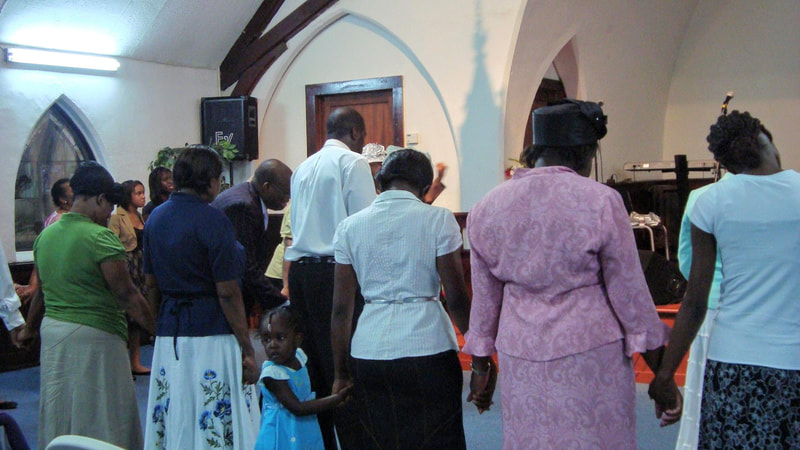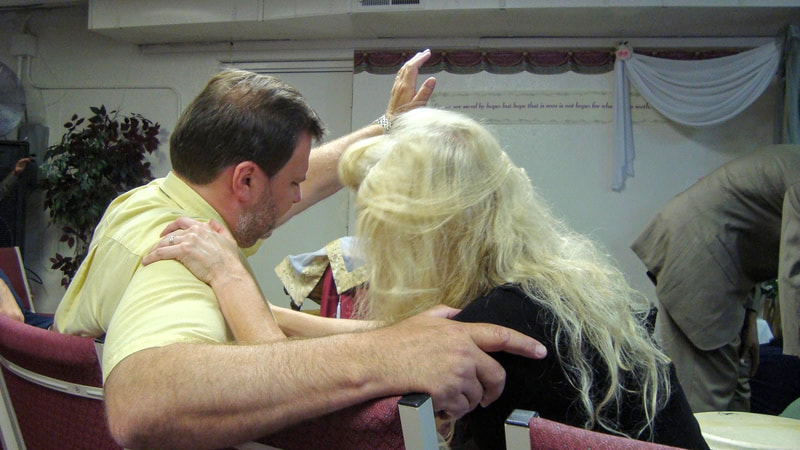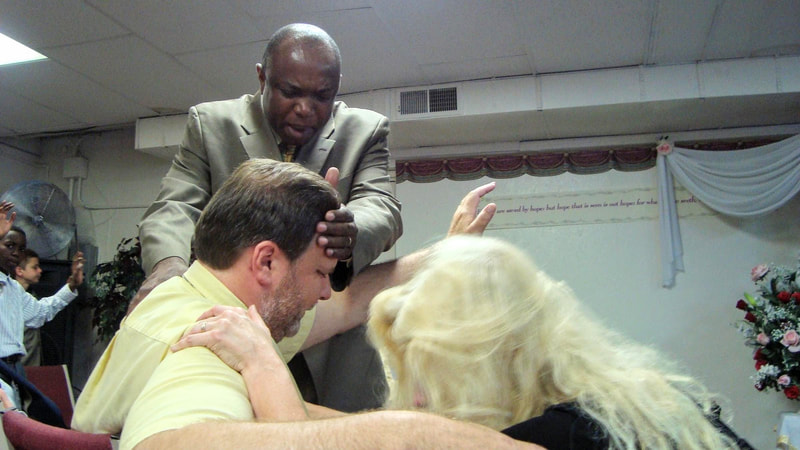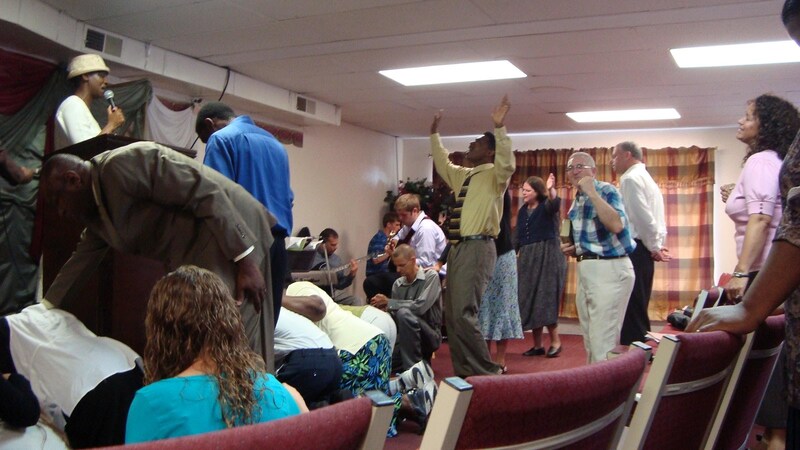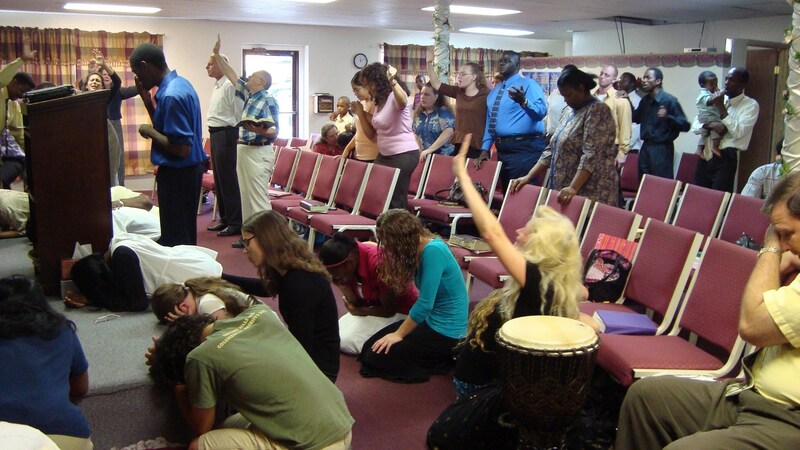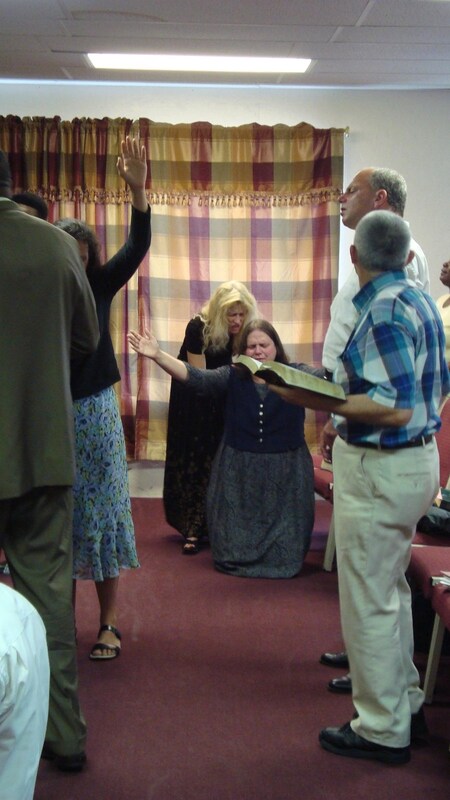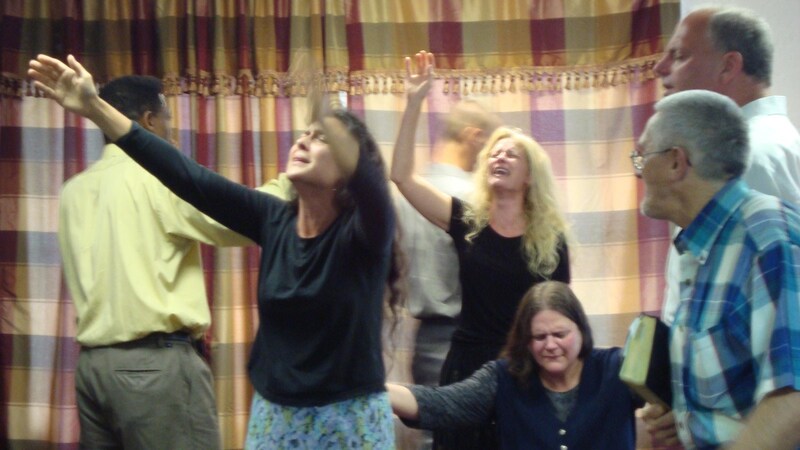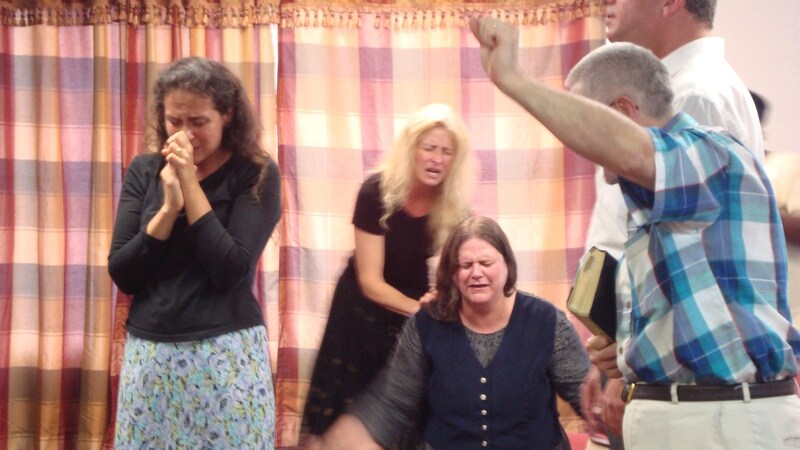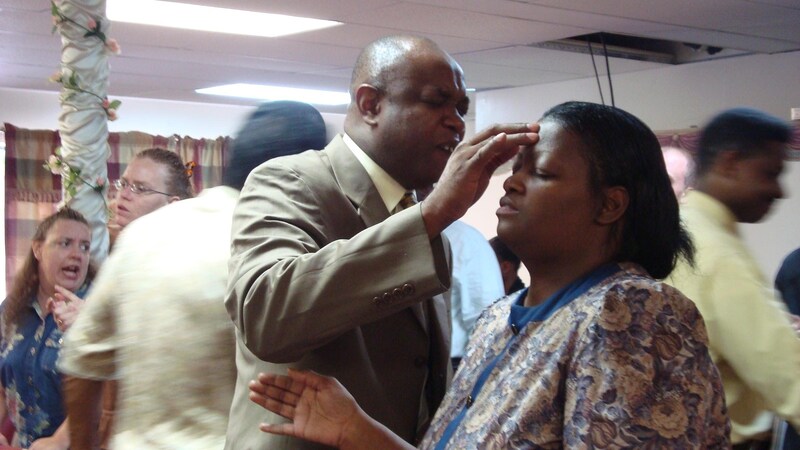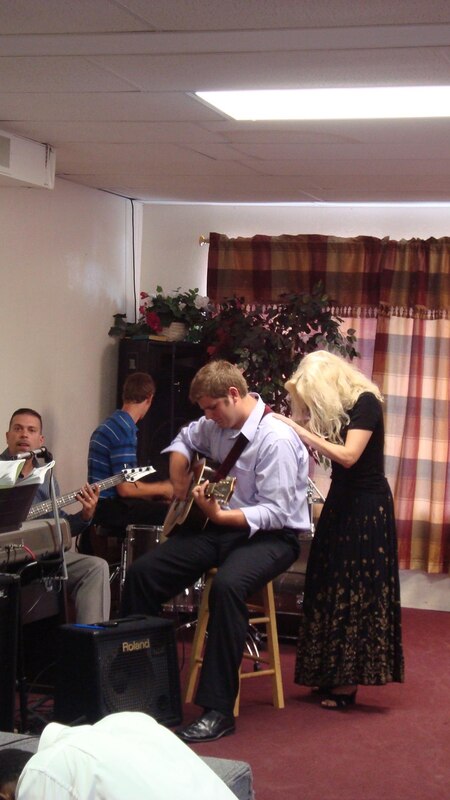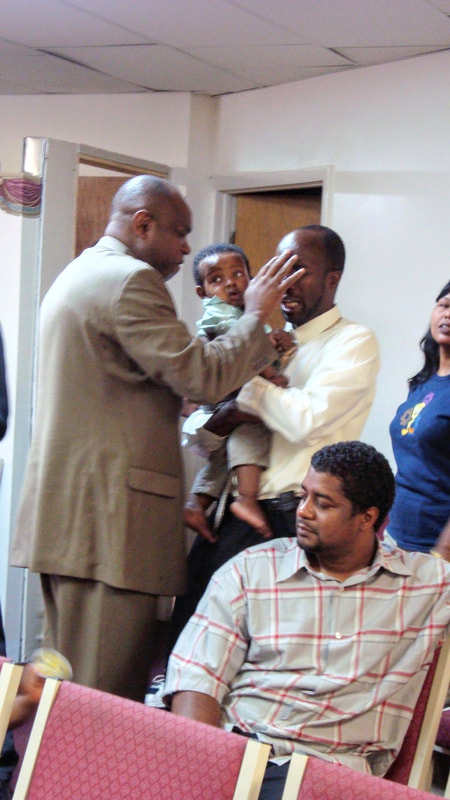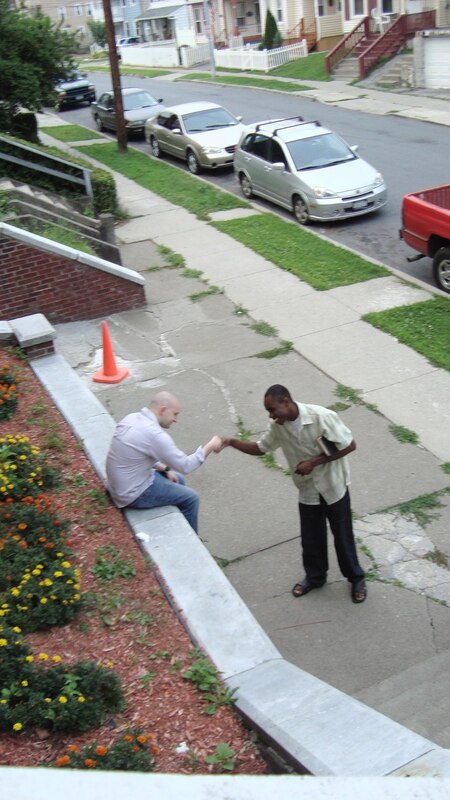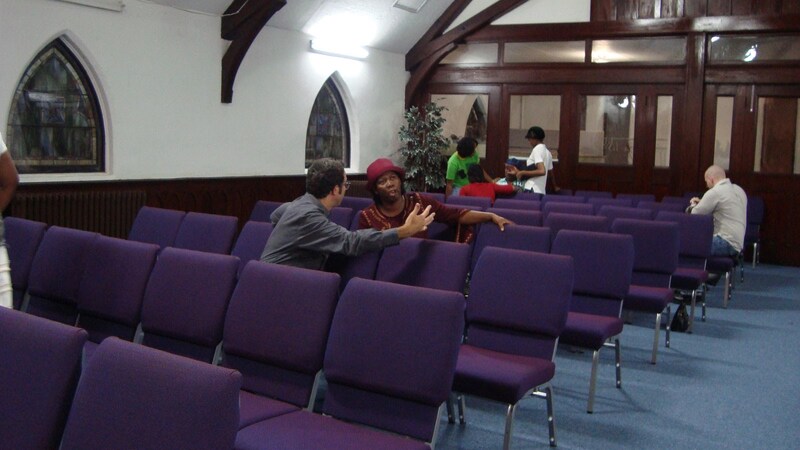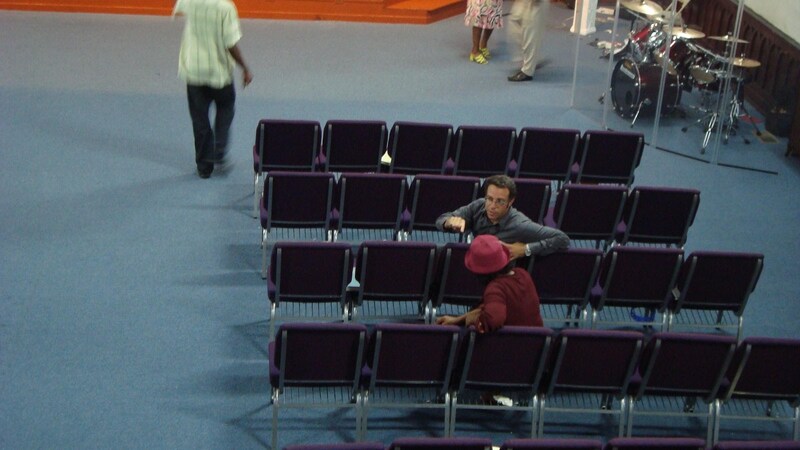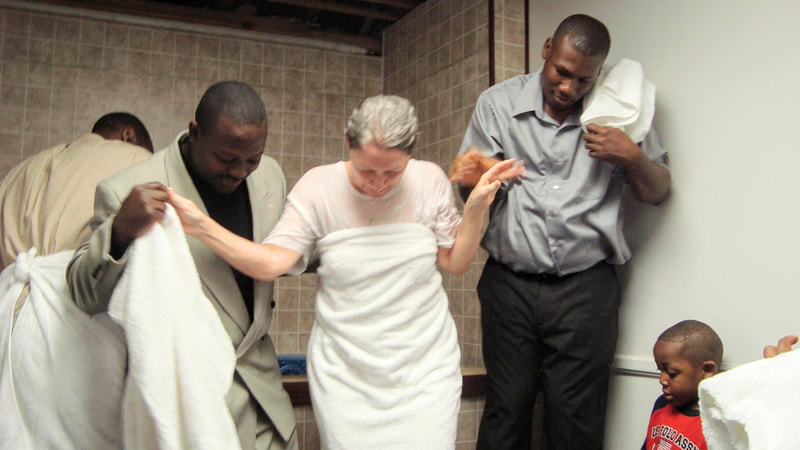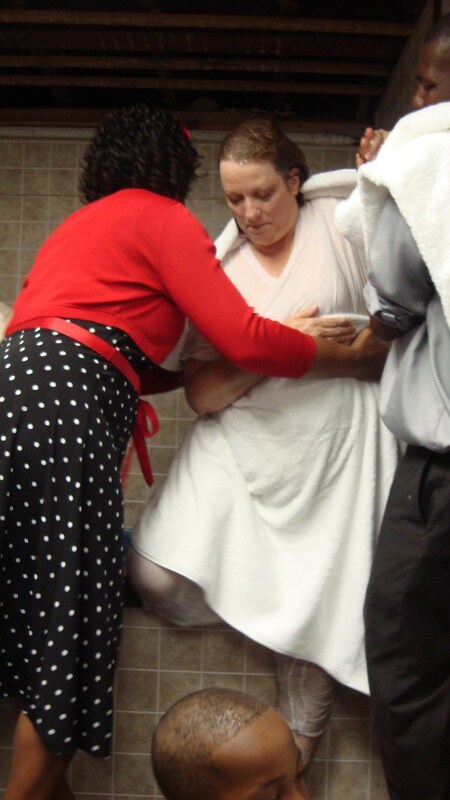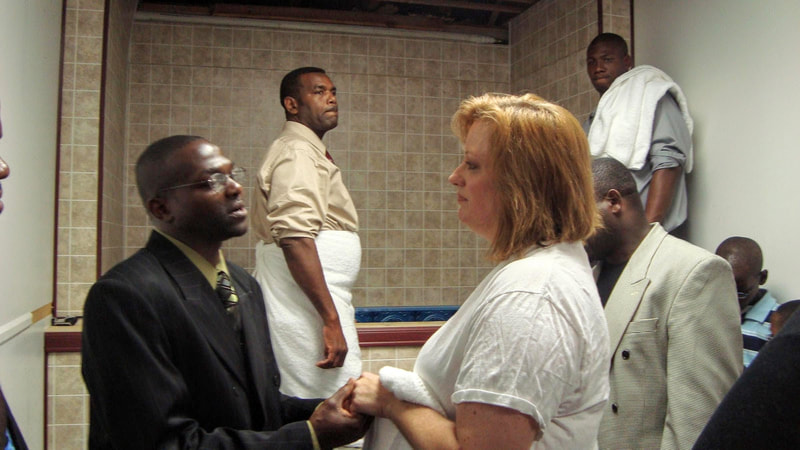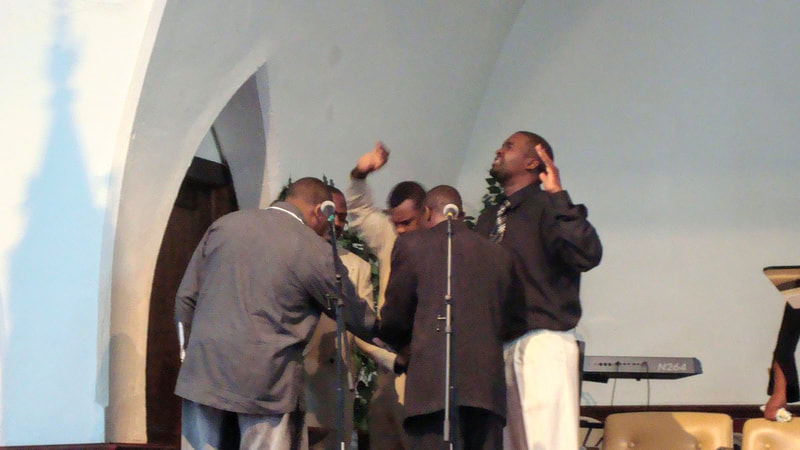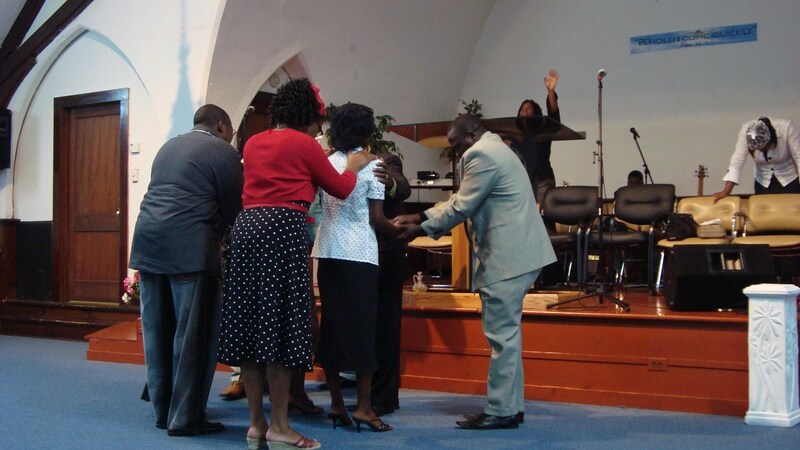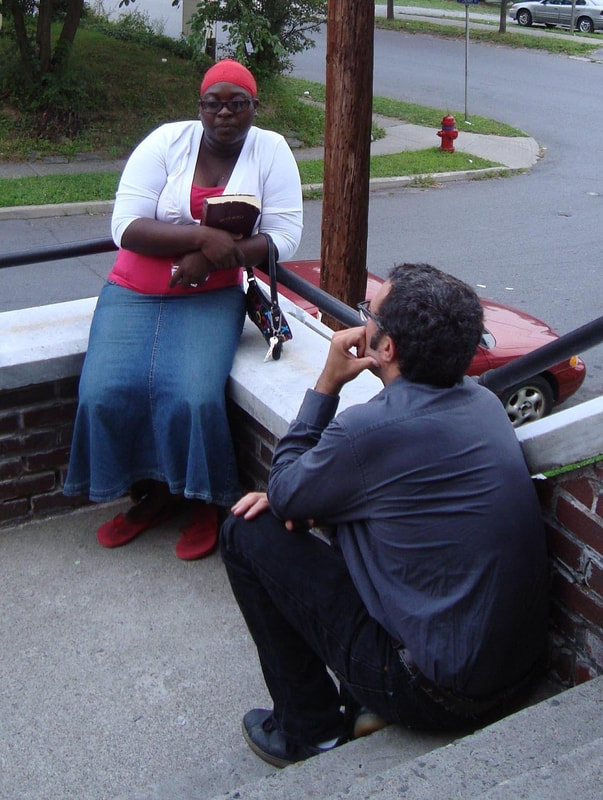I began studying the association between psychological dissociation (partitioning of awareness) and stress and relaxation response in graduate school. I conducted survey work among university students for my master's thesis and a biocultural study of Pentecostal speaking in tongues and stress response for my dissertation. On the side, I was part of an evolutionary psychology lab, where I began a study of self-deception, which is a form of dissociation. In Alabama, I began the Fireside Relaxation Study when I started my lab to train students in neuroanthropology by exploring the evolution and variability of dissociation as a means of self-soothing through fireside trance and relaxation.
We've extended this through investigations of Tanya Luhrmann's absorption hypothesis, which suggests that being good at spiritual practices like talking to God can be predicted by belief in the goals, training and practice toward those goals, and biological proclivity for absorption. Absorption and dissociation have slightly different definitions depending on the scholar; clinical dissociative disorders often include absorption, but also detachment, and depersonalization. Luhrmann suggests that absorption is a more broadly function of consciousness and that dissociation is used clinically to suggest disorganization, making absorption a better umbrella term. Though I agree with Luhrmann, there are several similar psychological constructs that have somewhat independent literatures that are difficult to rectify as one integrated model. For example, there are many constructs similar to and overlapping how dissociation has been described: trance, altered states of consciousness, flow states, hypnosis, possession, spirit journey. Deafferentation is a related term that describes how dissociation likely happens at the neural level, by preventing or gating the traffic of incoming or afferent signals in regions of the brain, limiting the experience of awareness. I've proposed that dissociation is the most pragmatic term for the various ways that awareness can be partitioned, which can take forms as various as daydreaming, meditation, possession trance, spirit journeys, intoxication, hypnosis, dissociative disorders, and demonic possession. Deafferentation is a neuroscience term that reflects the neural activities of dissociation, which involves gating of neural networks among brain regions. I consider trance the visible manifestation of dissociation, which is important to distinguish because dissociation is not always visible, but humans assign a lot of social meaning to visible dissociation. I developed this theoretical model to integrate complementary approaches and make it easier to generate and test hypotheses across disciplines.
In exploring trance, I've hypothesized that one function is to signal group commitment. We've tested this using behavioral ecology theory to compare the 3B's (badges, behaviors, bans) of religious commitment signaling to wellbeing biomarkers (total diurnal cortisol and alpha-amylase). Our research has included using multi-level selection theory and social network analysis in studies of the intragroup integration in churches with many interest groups in Alabama. We've also been conducting campus-based research on the biological proclivity for absorption predicted by the absorption hypothesis. To do this, we've been exploring the association between absorption and the catechol-O-methyl transferase (COMT), which has been identified as having regulatory functions in dopamine pathways in the brain. COMT has been associated with variation in hypnotizability.
Here are examples of my publications, public and academic presentations, and media related to this research.
We've extended this through investigations of Tanya Luhrmann's absorption hypothesis, which suggests that being good at spiritual practices like talking to God can be predicted by belief in the goals, training and practice toward those goals, and biological proclivity for absorption. Absorption and dissociation have slightly different definitions depending on the scholar; clinical dissociative disorders often include absorption, but also detachment, and depersonalization. Luhrmann suggests that absorption is a more broadly function of consciousness and that dissociation is used clinically to suggest disorganization, making absorption a better umbrella term. Though I agree with Luhrmann, there are several similar psychological constructs that have somewhat independent literatures that are difficult to rectify as one integrated model. For example, there are many constructs similar to and overlapping how dissociation has been described: trance, altered states of consciousness, flow states, hypnosis, possession, spirit journey. Deafferentation is a related term that describes how dissociation likely happens at the neural level, by preventing or gating the traffic of incoming or afferent signals in regions of the brain, limiting the experience of awareness. I've proposed that dissociation is the most pragmatic term for the various ways that awareness can be partitioned, which can take forms as various as daydreaming, meditation, possession trance, spirit journeys, intoxication, hypnosis, dissociative disorders, and demonic possession. Deafferentation is a neuroscience term that reflects the neural activities of dissociation, which involves gating of neural networks among brain regions. I consider trance the visible manifestation of dissociation, which is important to distinguish because dissociation is not always visible, but humans assign a lot of social meaning to visible dissociation. I developed this theoretical model to integrate complementary approaches and make it easier to generate and test hypotheses across disciplines.
In exploring trance, I've hypothesized that one function is to signal group commitment. We've tested this using behavioral ecology theory to compare the 3B's (badges, behaviors, bans) of religious commitment signaling to wellbeing biomarkers (total diurnal cortisol and alpha-amylase). Our research has included using multi-level selection theory and social network analysis in studies of the intragroup integration in churches with many interest groups in Alabama. We've also been conducting campus-based research on the biological proclivity for absorption predicted by the absorption hypothesis. To do this, we've been exploring the association between absorption and the catechol-O-methyl transferase (COMT), which has been identified as having regulatory functions in dopamine pathways in the brain. COMT has been associated with variation in hypnotizability.
Here are examples of my publications, public and academic presentations, and media related to this research.
For those who would like to delve deeper, following are all the publications, studies, and related photos from this research:
CD Lynn. Adaptive and maladaptive dissociation: An epidemiological and anthropological comparison and proposition for an expanded dissociation model. Anthropology of Consciousness, 2005, 16(2):16-50. http://onlinelibrary.wiley.com/doi/10.1525/ac.2005.16.2.16/pdf.
I wrote this for a term paper in my adviser Larry Schell's Medical Anthropology course when I was a master's student. Little did I know it at the time, but I was establishing my theoretical perspective for much of my coming work. In this paper, I compared epidemiological and anthropological models of dissociation and suggested the concept and suggested an expanded conceptual model. I attended a Society for the Anthropology of Consciousness (SAC) conference that year and had coffee with the Society's journal editor, who I mentioned the paper to. He encouraged me to submit it, so I polished it up that summer, submitted, and received an acceptance with minor revisions in a remarkably short time (it's spoiled and demoralized me ever since). I received Best Paper award for the SAC that year and later submitted it as my publication sample when I was on the job market. It was my only publication at the time, but it helped me get my job here at UA.
CD Lynn. Adaptive and maladaptive dissociation: An epidemiological and anthropological comparison and proposition for an expanded dissociation model. Anthropology of Consciousness, 2005, 16(2):16-50. http://onlinelibrary.wiley.com/doi/10.1525/ac.2005.16.2.16/pdf.
I wrote this for a term paper in my adviser Larry Schell's Medical Anthropology course when I was a master's student. Little did I know it at the time, but I was establishing my theoretical perspective for much of my coming work. In this paper, I compared epidemiological and anthropological models of dissociation and suggested the concept and suggested an expanded conceptual model. I attended a Society for the Anthropology of Consciousness (SAC) conference that year and had coffee with the Society's journal editor, who I mentioned the paper to. He encouraged me to submit it, so I polished it up that summer, submitted, and received an acceptance with minor revisions in a remarkably short time (it's spoiled and demoralized me ever since). I received Best Paper award for the SAC that year and later submitted it as my publication sample when I was on the job market. It was my only publication at the time, but it helped me get my job here at UA.
CD Lynn. Dissociation, stress, and well-being: A pilot study of psychological allostasis in a university student sample. Master’s Paper. 2006, University at Albany, Department of Anthropology.
For my master's, I explored various survey methods for studying dissociation, perceived stress, and well-being in an effort to contextualize dissociation within the allostasis concept.
For my master's, I explored various survey methods for studying dissociation, perceived stress, and well-being in an effort to contextualize dissociation within the allostasis concept.
|
|
CD Lynn. Glossolalia influences on stress response among Apostolic Pentecostals. Ph.D. Dissertation. University at Albany, Department of Anthropology, 2009.
For my dissertation, I studied the influences of glossolalia (speaking in tongues) on stress response in two Apostolic Pentecostal churches in Poughkeepsie and Kingston, NY. Most glossolalia takes place as part of a dissociative trance, and the objective of this study was to examine the influence of culturally relative dissociation on stress and well-being. It is an expansion of a study of dissociation, stress, and well-being conducted for my master’s project. I developed a questionnaire to assess lifetime glossolalia experience based on interviews with 14 key informants and administered to a sample of 52 members. He collected saliva samples on a consecutive Sunday and Monday and assayed for cortisol (a hormonal biomarker of stress) and alpha-amylase (an enzymatic marker of arousal) to compare the influence of lifetime glossolalia experience on a service and non-service day, respectively. Results indicated that people with more lifetime glossolalia experience had higher stress and arousal on Sunday (indicative of more involvement in experiential worship) but lower stress and more stable arousal on Monday (indicative of less reactivity). The preliminary interpretation is that dissociative religious rituals like glossolalia practiced over an extended period can reduce the reactivity of biological stress response and provide a buffering influence, but, as congregants pointed out, “speaking in tongues is not enough.” As was also observed, glossolalia was not always a good things that resulted in reduced stress but had to be viewed in context. CD Lynn, J Paris, CA Frye, LM Schell. Salivary Alpha-Amylase and Cortisol among Pentecostals on a Worship and Nonworship Day. American Journal of Human Biology, 2010, 22(6):819-822. doi: 10.1002/ajhb.21088
This was the first paper I wrote from my dissertation. A reviewer suggested I split it into two papers, one just comparing the HPA axis (salivary cortisol) and the sympathetic nervous system response (salivary alpha-amylase) in Pentecostals (this paper) and the other analyzing speaking in tongues. I sent it to AJHB because it the Society my adviser Larry Schell went and suggested I present. The first Human Biology Association conference I went to was 2010 in Albuquerque, NM, where I presented my data. Everyone there was receptive and welcoming, and the journal editors encouraged attendees to submit their work to the journal. HBA and AJHB have really become my academic homes over the years, as I've published in it several times and am an active member of the HBA Executive Committee and AJHB Editorial Board. CD Lynn, J Paris, C Frye, L Schell. Glossolalia is Associated with Differences in Biomarkers of Arousal and Stress among Apostolic Pentecostals. Religion, Brain and Behavior, 2011, 1(3):173-191. http://dx.doi.org/10.1080/2153599X.2011.639659.
This was the second paper I wrote from my dissertation, where I specifically described the relationship between speaking in tongues and cortisol and alpha-amylase to test the hypothesis that speaking in tongues as a form of dissociation is generally stress-reducing. Religion, Brain and Behavior was a brand new journal at the time coming out of the field of Cognitive Science of Religion, which I thought my work would complement theoretically. CD Lynn. “The Wrong Holy Ghost”: Discerning the Apostolic Gift of Discernment. Ethos, 2013, 41(2):223-247. http://onlinelibrary.wiley.com/doi/10.1111/etho.12016/abstract
This is the third paper from my dissertation and is largely an opportunity to discuss and analyze one of the most important transitional events during my dissertation research. There were only kernels of it in my dissertation really, as Ethos editor Janet Dixon Keller and reviews made major editorial suggestions twice. It was completely transformed by the time it was published, but that was all for the good. I am very fond of this paper and tell this story often in class and public appearances. CD Lynn, JJ Paris, CA Frye, LM Schell. Religious-commitment signaling and impression management amongst Pentecostals: Relationships to salivary cortisol and alpha-amylase. Journal of Cognition and Culture, 2015, 15(3-4):299-319. http://booksandjournals.brillonline.com/content/journals/10.1163/15685373-12342152.
Toward the end of writing my dissertation, I read Rich Sosis' and Bill Irons' work on religious commitment signaling and wondered if speaking in tongues might be a hard-to-fake sign of commitment, as Irons called them. A few years later, I read a piece by Montserrat Soler that suggested a means of developing variables for religious signaling from data I'd collected during my dissertation fieldwork. I'd included the Balanced Inventory of Desirable Responding for a subset of participants, which includes a subscale measuring general impression management. Religious-commitment signaling is theoretically a special subtype of impression management. I thought both types would be associated with lower stress biomarker and found even more interesting results. This is the only paper I ever had accepted immediately after peer-review with no revisions. |
CD Lynn, RN Pipitone, JP Keenan. To thine own self be false: Self-deceptive enhancement and sexual awareness influences on mating success. Evolutionary Behavioral Sciences 2014, 8(2):109-122, doi: 10.1037/h0097255.
I started this study in graduate school in New York and finished it in Alabama, but it was based on an interaction I had when visiting potential graduate schools. I could not envision leaving the New York Metropolitan Area at the time, so I was looking for nearby anthropology programs with professors whose research would help me develop my interests. The self-deception concept is related to the dissociation concept, and I'd seen on the website of Rutgers Anthropology Professor Bob Trivers that self-deception was one of his research interests. Unbeknownst to me at the time, Bob Trivers is responsible for some of the fundamental theories of sociobiology. He gave me a copy of his 2010 theoretical paper on the evolution of self-deception, which basically suggested it must be related to mating success. Julian Keenan is a neuroscientist at Montclair State University who had also studied self-deception and had shared evolutionary psychologist Gordon Gallup Jr. as a dissertation committee member (AND he was friends with my wife from their undergraduate days). Julian helped us design this study. We tried to triangulate mating-relevant self-deception by the using the Balanced Inventory of Desirable Responding, the Overclaiming Questionnaire, and a metric created by comparing self-ratings of attractiveness to others' ratings of subject attractiveness. We used lifetime intercourse partners and partner's SES as proxies of mating success. Nate Pipitone was an actual evolutionary psychology graduate student member of the Gallup Lab, whereas I just attended their weekly meeting. Nate collected all the Albany data for this through the Psychology Research Pool, which included taking facial photographs of subjects to be rated for attractiveness by college students at another university. We were initially going to have Julian's lab collect the ratings, but when I was hired at UA and moved to Alabama, it became easier for me to collect those data through my new lab. This line of research was extended to one more study conducted at Alabama that elicited null results and a manuscript that was not accepted for publication.
I started this study in graduate school in New York and finished it in Alabama, but it was based on an interaction I had when visiting potential graduate schools. I could not envision leaving the New York Metropolitan Area at the time, so I was looking for nearby anthropology programs with professors whose research would help me develop my interests. The self-deception concept is related to the dissociation concept, and I'd seen on the website of Rutgers Anthropology Professor Bob Trivers that self-deception was one of his research interests. Unbeknownst to me at the time, Bob Trivers is responsible for some of the fundamental theories of sociobiology. He gave me a copy of his 2010 theoretical paper on the evolution of self-deception, which basically suggested it must be related to mating success. Julian Keenan is a neuroscientist at Montclair State University who had also studied self-deception and had shared evolutionary psychologist Gordon Gallup Jr. as a dissertation committee member (AND he was friends with my wife from their undergraduate days). Julian helped us design this study. We tried to triangulate mating-relevant self-deception by the using the Balanced Inventory of Desirable Responding, the Overclaiming Questionnaire, and a metric created by comparing self-ratings of attractiveness to others' ratings of subject attractiveness. We used lifetime intercourse partners and partner's SES as proxies of mating success. Nate Pipitone was an actual evolutionary psychology graduate student member of the Gallup Lab, whereas I just attended their weekly meeting. Nate collected all the Albany data for this through the Psychology Research Pool, which included taking facial photographs of subjects to be rated for attractiveness by college students at another university. We were initially going to have Julian's lab collect the ratings, but when I was hired at UA and moved to Alabama, it became easier for me to collect those data through my new lab. This line of research was extended to one more study conducted at Alabama that elicited null results and a manuscript that was not accepted for publication.
CD Lynn. Hearth and campfire influences on arterial blood pressure: Defraying the costs of the social brain through fireside relaxation. Evolutionary Psychology, 2014, 12(5):983-1003, epjournal.net/3397.
I first brought the idea for this study to the Gallup Lab in graduate school and had outlined a model to conduct a version in a local mall that had a fireplace. The study is a way of testing sociologist James McClenon's "ritual healing hypothesis," which I read about in graduate school. The hypothesis suggests that rituals would have naturally developed around campfires because of the hypnotic effects of gazing at flames in the dark, because fire extended the day but only by bringing people together around it, and because the hypnotic influences help with group entrainment. A synergy between the hypnotic effects and the kinds of things people do around fires at night may have involved into means of security against danger in the night, spirits, sickness. But I wondered, what makes us think Homo erectus would have been mesmerized by fire? Furthermore, is fire universally hypnotic now? Do we know this? I couldn't find any evidence upon which this hypothesis could be based. First we need to confirm that fires in fact have this capacity to hypnotically synchronize a group. We didn't launch it in Albany, but when I started the HBERG lab in Alabama, I used the Fireside Relaxation Study as the project to launch the lab. Teaching projects are slow, so it took 5 years for this paper to come out, but it was the first viral publication from our lab. We've been funded by Napoleon Fireplaces & Grills to replicate this study with one of their electric fireplaces and have a page for more information about this research.
I first brought the idea for this study to the Gallup Lab in graduate school and had outlined a model to conduct a version in a local mall that had a fireplace. The study is a way of testing sociologist James McClenon's "ritual healing hypothesis," which I read about in graduate school. The hypothesis suggests that rituals would have naturally developed around campfires because of the hypnotic effects of gazing at flames in the dark, because fire extended the day but only by bringing people together around it, and because the hypnotic influences help with group entrainment. A synergy between the hypnotic effects and the kinds of things people do around fires at night may have involved into means of security against danger in the night, spirits, sickness. But I wondered, what makes us think Homo erectus would have been mesmerized by fire? Furthermore, is fire universally hypnotic now? Do we know this? I couldn't find any evidence upon which this hypothesis could be based. First we need to confirm that fires in fact have this capacity to hypnotically synchronize a group. We didn't launch it in Albany, but when I started the HBERG lab in Alabama, I used the Fireside Relaxation Study as the project to launch the lab. Teaching projects are slow, so it took 5 years for this paper to come out, but it was the first viral publication from our lab. We've been funded by Napoleon Fireplaces & Grills to replicate this study with one of their electric fireplaces and have a page for more information about this research.
CD Lynn. Would our early ancestors have watched the Super Bowl? Sapiens, January 31, 2019 https://www.sapiens.org/archaeology/history-of-fire-super-bowl/.
I wrote this fun magazine article about our fireside relaxation research and follow-up comparison of fire and television (unpublished) in time for the holidays and Super Bowl.
I wrote this fun magazine article about our fireside relaxation research and follow-up comparison of fire and television (unpublished) in time for the holidays and Super Bowl.
C Ocobock, CD Lynn, M Sarma, L Gettler. Organized adult play and stress reduction: Testing the absorption hypothesis among a comedy improv theater. Adaptive Human Behavior and Physiology, 2020 https://doi.org/10.1007/s40750-020-00147-z.
My close friend and colleague Cara Ocobock proposed this study when her husband was part of a comedy improv company in New York and she had funding to support a collaboration. We designed a study based on the research design I used in my study of speaking in tongues as a form of dissociation and stress response. Cara collected the data, and Mallika Sarma and Lee Gettler conducted the biomarker analysis at Notre Dame. AHBP is an excellent new journal I learned about when I was hosted by the editor during a visit at the University of Chicago. Cara and I had fun writing this article while she smoked meat.
My close friend and colleague Cara Ocobock proposed this study when her husband was part of a comedy improv company in New York and she had funding to support a collaboration. We designed a study based on the research design I used in my study of speaking in tongues as a form of dissociation and stress response. Cara collected the data, and Mallika Sarma and Lee Gettler conducted the biomarker analysis at Notre Dame. AHBP is an excellent new journal I learned about when I was hosted by the editor during a visit at the University of Chicago. Cara and I had fun writing this article while she smoked meat.
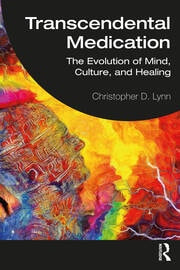
Transcendental Medication: The Evolution of Mind, Culture, and Healing, 2022, Routledge Press.
This book basically integrates all the above studies into a theory of consciousness including dissociation as key feature to mitigate the costs of awareness.
This book basically integrates all the above studies into a theory of consciousness including dissociation as key feature to mitigate the costs of awareness.

